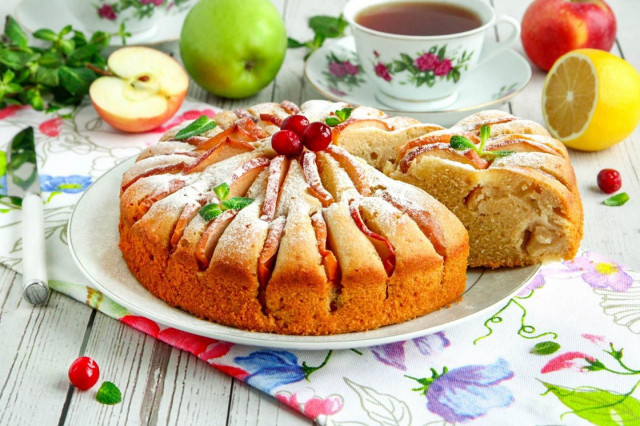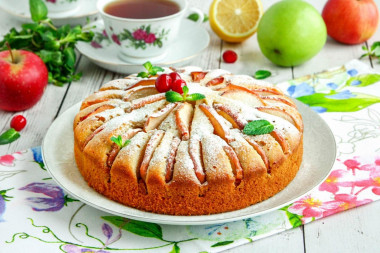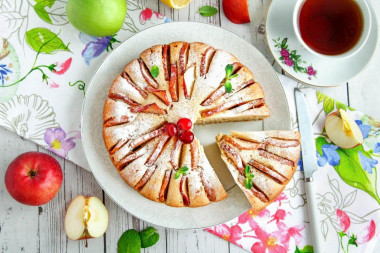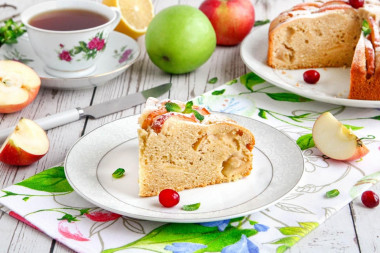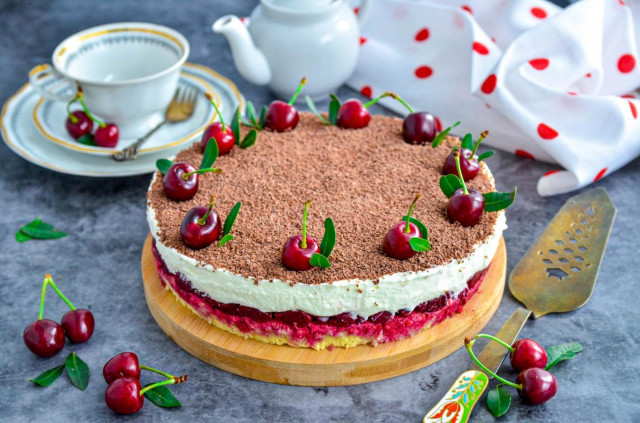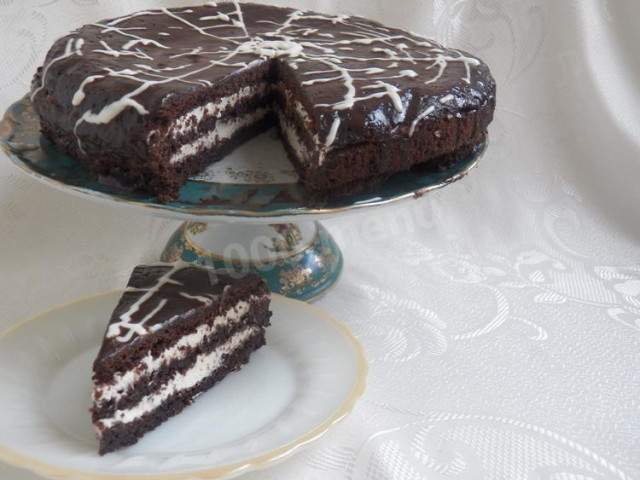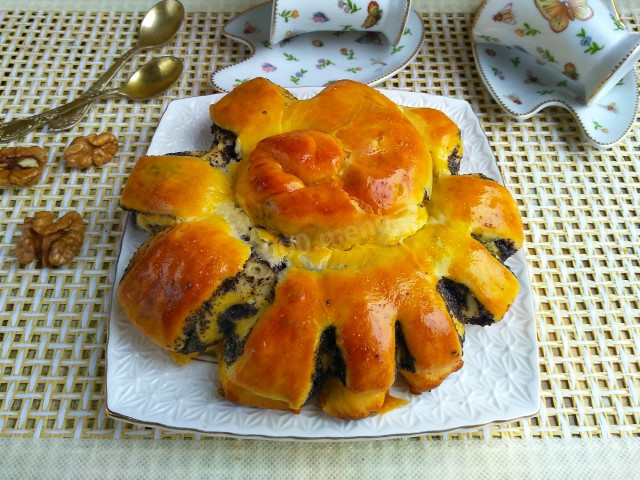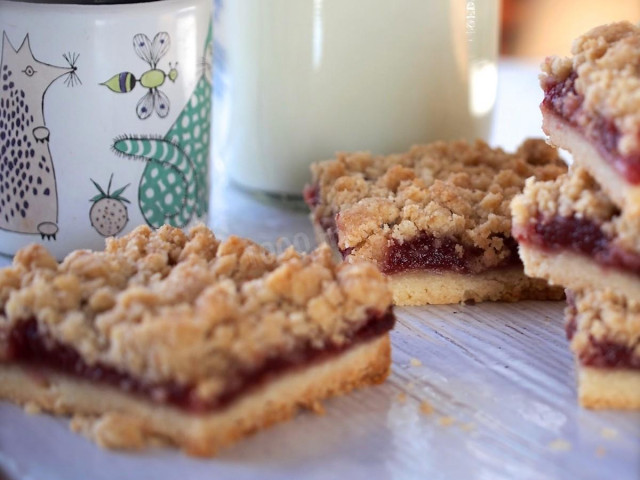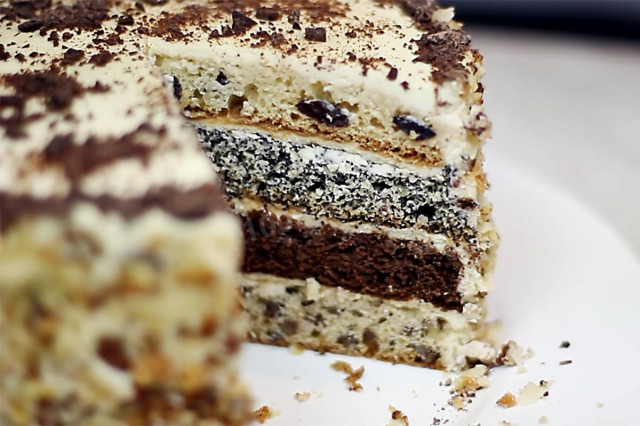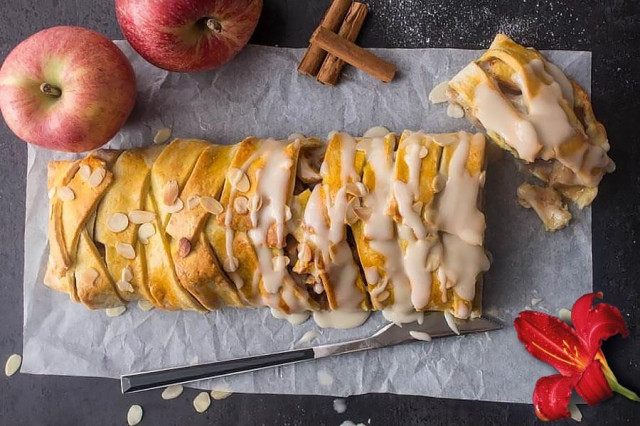Composition / ingredients
Step-by-step cooking
Step 1:

How to make an apple pie from rice flour on kefir PP? Measure out the necessary ingredients. Remove the butter from the refrigerator in advance so that it becomes soft. Kefir should not be cold either. It is better to take sweet and sour apples of medium size.
Step 2:
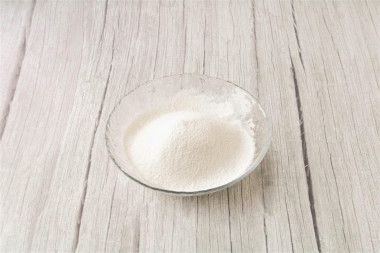
Combine rice flour with baking powder and sift through a sieve. Sifting will enrich the flour with oxygen, thanks to this, the cake will rise better during baking and turn out lush.
Step 3:
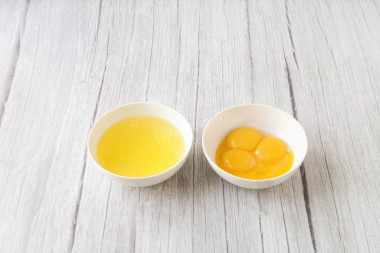
Wash the eggs, dry them. Separate the whites from the yolks. Do this carefully so that not a drop of yolk gets into the whites. Otherwise, the proteins will not climb into a stable foam.
Step 4:
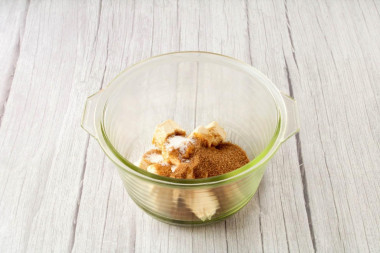
Combine soft butter with cane sugar and vanilla sugar. Beat with a mixer until fluffy and smooth.
Step 5:
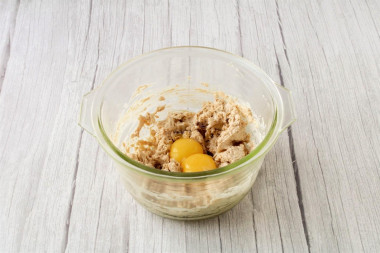
Enter the yolks in parts (2 yolks each), beating well after each addition.
Step 6:
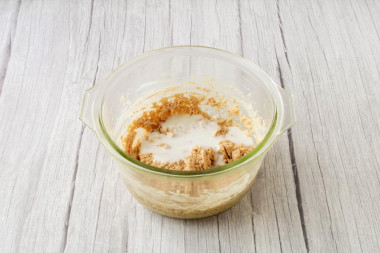
Pour in the kefir, whisk lightly again.
Step 7:

Pour in the flour sifted with baking powder. Mix the dough with a spatula or mixer until the lumps of flour disappear.
Step 8:
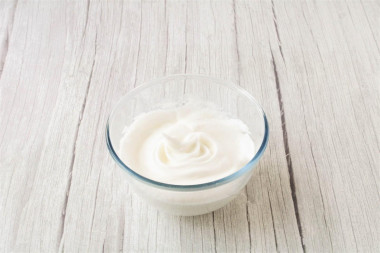
Thoroughly rinse and dry the beaters of the mixer. There should be no oil residue on them. Otherwise, it will make it difficult to beat the proteins. Whisk the whites first at low speeds to a soft foam, then gradually increase the speed. Whisk the whites to dense, stable peaks.
Step 9:
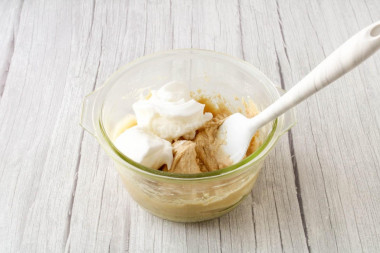
Enter the whipped whites in parts, gently mixing the dough with a spatula.
Step 10:
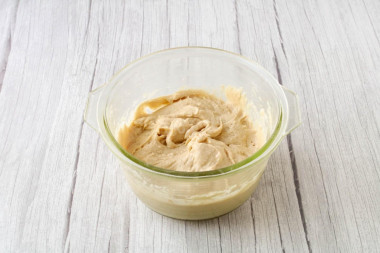
The dough turns out to be viscous, thick, homogeneous.
Step 11:
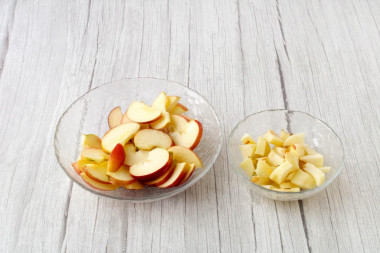
Wash the apples, dry them. Some of the apples will be inside the pie (I cut them into cubes), the rest on top. The skin of the apples can be removed, or you can leave. But if the skin is too rough and thick, it is better to cut it off. Cut the apples for the top into slices of medium thickness. Sprinkle the prepared apples with lemon juice so that they do not darken longer.
Step 12:
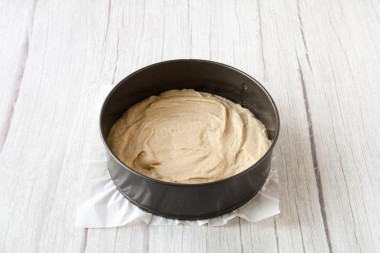
Cover the bottom of the baking dish with a diameter of 20-22 cm with parchment. Lubricate the walls of the mold with a thin layer of odorless vegetable oil. Lay out half of the dough, smooth it out.
Step 13:
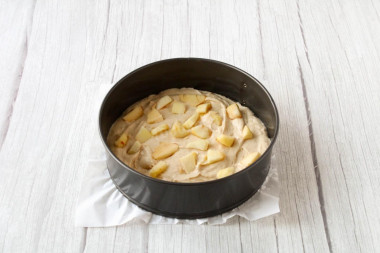
Spread the sliced apples evenly on top.
Step 14:

Put the rest of the dough on the apples, smooth it out.
Step 15:
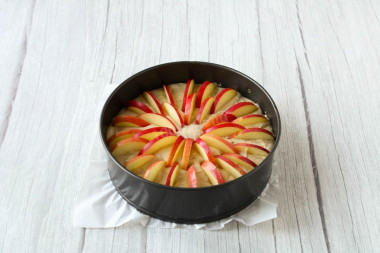
Decorate the pie with apple slices on top. You can lightly press the slices into the dough or spread out with a fan. Choose the option that you like best.
Step 16:
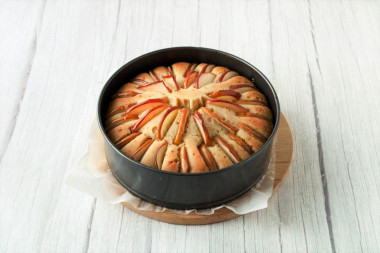
Bake a rice flour pie with apples in a preheated 180C oven for about 50 minutes. Adjust the baking time and mode based on the specifics of the oven. Keep in mind that rice flour pastries will take a little longer to cook than wheat flour. Determine the readiness of the pie with a skewer. If the skewer removed from the middle of the pie comes out dry, then the pie is ready. Let it cool a little in the mold, then take it out. Cool the cake completely.
Step 17:
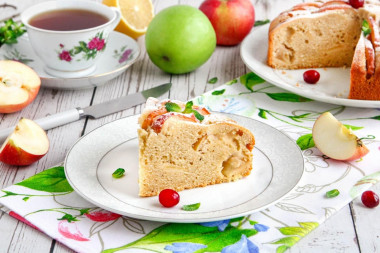
Cut the pie into portions and serve to the table. Enjoy your meal!
With proper nutrition, rice flour can be considered more useful. Baking from it cleanses the body of toxins, relieves edema. Rice flour is hypoallergenic, as it does not contain gluten. This recipe makes it possible for people who are intolerant of this protein to enjoy the taste of homemade pastries.
Keep in mind that everyone's ovens are different. The temperature and cooking time may differ from those specified in the recipe. To make any baked dish successful, use useful information about the features of ovens !
In order for the oven to have time to heat up to the desired temperature, turn it on in advance (10-20 minutes before the start of cooking).
It is important to realize that there are no recipes or products in nature that are certainly useful to all people or unconditionally harmful to everyone. As with medicines, and in nutrition, there are indications and contraindications, daily individual consumption rates and for most people all this is very personalized. At the same time, there are a lot of myths “about proper nutrition” (for example: fat is bad), which distort the very essence of this concept and in such a distorted form are distributed on the Internet and the media. Therefore, remember that any “PP recipe” will be related to proper nutrition only conditionally, it should not be perceived as a dogma. And even if the author of the recipe, a “healthy nutrition specialist” or a nutritionist and fitness trainer calls something useful (PP) or harmful, it may not be so for you personally.
The opinion of the site administration about proper nutrition may not coincide with the opinion of the author of the PP recipe!
The calorie content of the products possible in the dish
- Chicken egg - 157 kcal/100g
- Egg white - 45 kcal/100g
- Egg powder - 542 kcal/100g
- Egg yolk - 352 kcal/100g
- Ostrich egg - 118 kcal/100g
- Apples - 47 kcal/100g
- Dried apples - 210 kcal/100g
- Canned apple mousse - 61 kcal/100g
- Kefir fat - 62 kcal/100g
- Kefir of 1% fat content - 38 kcal/100g
- Low-fat kefir - 30 kcal/100g
- Kefir "doctor beefy" 1,8% fat content - 45 kcal/100g
- Kefir 2.5% fat content - 53 kcal/100g
- Butter 82% - 734 kcal/100g
- Amateur unsalted butter - 709 kcal/100g
- Unsalted peasant butter - 661 kcal/100g
- Peasant salted butter - 652 kcal/100g
- Melted butter - 869 kcal/100g
- Lemon juice - 16 kcal/100g
- Baking powder dough - 79 kcal/100g
- Brown sugar - 394 kcal/100g
- Vanilla sugar - 379 kcal/100g
- Rice flour - 356 kcal/100g

